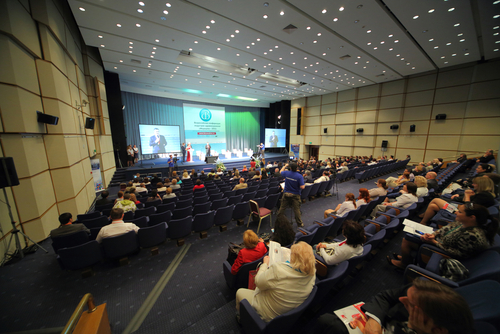ALS Promising Therapies Take Center Stage at Researchers’ Meeting

An ALS Association-sponsored meeting, held at Cold Spring Harbor Laboratory in Huntington, New York, brought together expert researchers to discuss three main themes in current amyotrophic lateral sclerosis (ALS) research: antisense therapy, gene therapy and stem cell therapy.
Recent ALS therapeutic approaches have not been very successful, with only one drug, Riluzole (Sanofi Pharmaceuticals), getting FDA approval. The themes discussed at the meeting focused on treatments that target the origin of the disease instead of symptoms or slowing disorder progression:
- Antisense gene therapy consists of a gene silencing procedure using short oligonucleotides inserted into cells that bind to target RNA and block defective protein production. This approach is being currently developed for two of the major mutations known in ALS: mutations in the SOD1 gene and in the C9orf72 gene. An antisense therapy for mutant gene SOD1, developed in the University of Washington, Saint Louis, is moving forward to clinical trials, after results showed it safe in ALS patients. Promising research from the University of California, San Diego, has shown antisense therapy against the C9orf72 mutation is effective in cell and animal models, and will proceed to safety trials in 2016.
- Voyager Therapeutics is currently working on a gene therapy approach to silence the SOD1 mutant gene, using a viral vector delivery of a gene that codes for an interference RNA, leading to the breakdown of the mutated gene. The research is currently on its in vivo research stages. Additionally, Ohio State University researchers are currently trying to demonstrate that gene therapy is successful to slow down motor neuron disease progression, which would be an important proof of concept. Gene therapy delivers genes to cells that might encode antisense molecules or therapeutic molecules such as growth factors, with the advantage of longer gene expression when compared to the direct delivery of antisense molecules.
- Emory University researchers presented an update on their stem cell therapy undergoing a clinical trial in ALS. Researchers implanted stem cells in the spinal cord of patients, hoping these transplanted cells will release growth factors that improve the health of remaining motor neuron cells. The trial has thus far showed this procedure is safe, but results are still being evaluated. Cedars-Sinai Hospital in Los Angeles presented its plans for a safety trial in the beginning of 2016 using its engineered stem cells, designed to release growth factors that would lead to less toxicity damage resultant from ALS in motor neurons.
The meeting also covered topics such as biomarker research and trial development. Notably, University of Missouri researchers presented the undergoing development of a SOD1 dog model of ALS (SOD1 mutations occur naturally in a sub-set of dogs), a promising preclinical model of pathology and disease genetics.
“Our purpose in holding these small scientific meetings is to encourage key researchers to engage in a free flow of dialogue that can bring out important ideas, point out weaknesses in approach that need strengthening, and promote collaboration to push the field forward,” said Lucie Bruijn, PhD, MBA, and Chief Scientist for The ALS Association. “Judged by those criteria, the meeting was a terrific success.”
Added Dr. Bruijn: “The excitement among our researchers about the progress of therapy for ALS is what drives the field forward. … We are all encouraged by the advances being made in the field, and know that we must continue to work even harder to move them forward even faster.”






